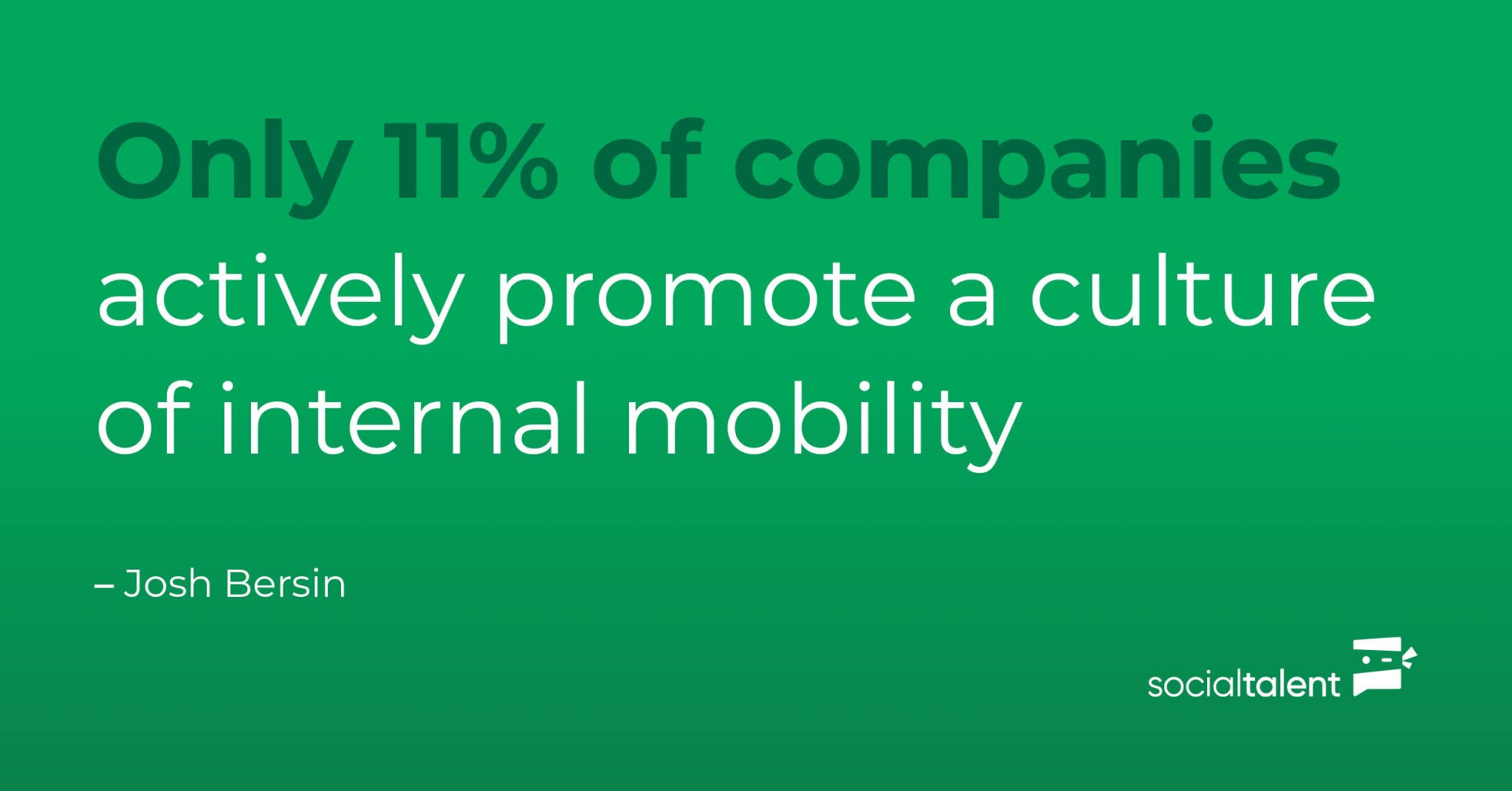We’re back for the final installation in our Internal Mobility series! If you missed the previous articles, don’t forget to catch-up on them – our first piece sought to offer a complete understanding of internal mobility, while the second looked at the benefits for employers. Here, we’re examining the common roadblocks that can arise when trying to improve or expand talent mobility within your organization.

Even the best laid plans of mice and men often go awry. Trying to establish or implement a culture of internal mobility can raise a number of barriers that need to be considered before going full throttle. Internal recruitment is often easier, faster, and more successful than external hiring. However, without adequate planning and an understanding of what your employees (and the organization) need, you can run into a number of challenges that will thwart success.
So let’s address them here, and try to diagnose these issues and offer a suitable remedy!
1. Managers who talent hoard
Good management is foundational in a strong approach to internal mobility. But unfortunately, this isn’t always the case in every company. Oftentimes if managers are made privy to knowledge about a team member’s desire to up-skill or apply for a new role, they squash the move to “save” their own team. Tasked with reaching performance goals themselves, they are loath to lose star employees, resulting in a phenomenon known as talent hoarding. However, when a manager blocks internal mobility, it encourages staff to stagnate out of fear, or look outside the company.
HBR has said that “managers need to be rewarded, not for retaining people on their teams, but retaining people (and their potential) across the entire organization.” In fact, IFO research has shown that when talent hoarding and barriers like this are removed, workers’ applications for promotions increase by 123%.
2. There is a lack of transparency
As we’ve seen, fear is often a big reason why employees are reluctant to pursue additional avenues in a company. If you want your internal mobility programs to thrive, the company has to be transparent and upfront about this. At ALL levels. Candidates have to feel secure in the knowledge that their application to another position won’t result in bad blood with their current manager or team. Equally managers need to feel confident in both their ability to champion these moves, and to receive the necessary support once the talent transitions.
According to McKinsey, some organizations count internal movement across roles in attrition metrics – don’t do this! Remove the fear and reframe the thinking. Ensure that internal mobility isn’t a taboo subject within your company walls. And empower your managers and encourage your staff to seek out opportunities.
Yasar Ahmad, the Global VP of Talent at HelloFresh spoke about the importance of internal mobility during our last SocialTalent Live.
3. How visible are your internal mobility opportunities?
In a survey conducted by Deloitte, about 50% of employees believe it is actually easier to find a job outside an organization than inside. It’s an obvious roadblock that talent acquisition and HR seems to come up against when trying to promote internal mobility. If job vacancies aren’t clearly visible to your own staff, how can you expect them to feel encouraged to apply?
Be proactive and ensure your teams know about any opportunities available to them. According to recent Gartner research, 51% of staff aren’t even aware of internal job openings! As a bare minimum, job boards or talent marketplaces should be built and connected with the digital channels where employees spend time. Emails can also be sent out, signalling open opportunities. And use stories to show how others have choreographed diverse and successful careers within your company. Give employees a clear map they can model their own journeys on.

4. Have you built a culture of internal mobility?
We learned all about the benefits of internal mobility in our last article. But without having an ingrained culture of internal talent, and everything this encompasses, organizations simply cannot leverage the function to its full potential. Internal mobility isn’t just about promotions; it’s lateral moves, temporary projects, stretch assignments, and more. If you view it through a miopic lens, you’ll never see its true advantage.
So how do you go about creating a culture of internal mobility?
- Provide clarity around the value of mobility so EVERYONE can see the benefits.
- Map the skills of your current employee base for future reference so internal opportunities can be pounced upon.
- Ensure people leaders are having regular career development conversations with their direct reports.
- Create ample opportunity and space to up-skill.
- Give internal applicants the same (if not more) credence as external ones – don’t regard them as after-thoughts.
- Encourage lateral moves and cross-department projects.
SocialTalent’s internal mobility training is tailored towards creating a culture of development and opportunity. Check it out.
5. Networking opportunities are minimal
Often overlooked when thinking about internal mobility, having opportunity and the skills needed to network well are fundamental for success. A study that appeared in the Frontiers of Psychology medical journal found that intra-organizational networking greatly impacts employability and can enhance career potential. But so few companies shine a spotlight on this process. If employees aren’t exposed to different groups or teams across the workplace, it becomes incredibly difficult to establish relationships and be seen as a viable candidate for new positions or stretch projects. According to HBR, it’s the manager who needs to facilitate this as they are in the best position “to make connections and direct introductions to new people.”
Networking forms an important strand in an organization’s ability to become more internally mobile. We recently caught up with Kingsley Aikins, the CEO of The Networking Institute, and he discussed with us why networking is so integral from a company point-of-view:
6. The preference for external hiring
Perhaps it’s because of tradition, but external recruitment always seems to be the preferred method of filling vacancies within companies. But to turn your back on internal mobility, is to turn your back on all the positives associated with it – from the speed and cost saving elements, to the ability to boost employee engagement and retention of valuable company knowledge. However, companies can very much be swayed by the ‘newness’ of external hiring. Stacked CVs and impressive titles can do a lot to convince of an ideal future filled with success. And it’s not always the lesser option – sometimes fresh blood is required, but it shouldn’t be the default.
We spoke to Roopesh Panchasra, the Global Head of Executive Talent at Uber, about this, and he said that both “external and internal searches should be conducted concurrently.” One shouldn’t trump the other. There can be a bit of a mindset block when it comes to this but when only 11% of companies promote a culture of internal mobility, as reported by Josh Bersin, it can be a difficult barrier to overcome.
So, now you know what internal mobility is, we’ve deep-dived into the many benefits of internal recruitment, and also looked at some of the common challenges that need to be overcome. Internal mobility means significantly more than just filling empty positions from within. It keeps a workplace agile and responsive, results in faster time-to-hire, develops talent, and improves retention. Don’t overlook this powerful process!
SocialTalent offers dedicated internal mobility training for organizations. Our e-learning content will give you the skills and knowledge needed to build and leverage a culture of internal mobility.
The post 6 barriers to internal mobility and how to overcome them appeared first on SocialTalent.
